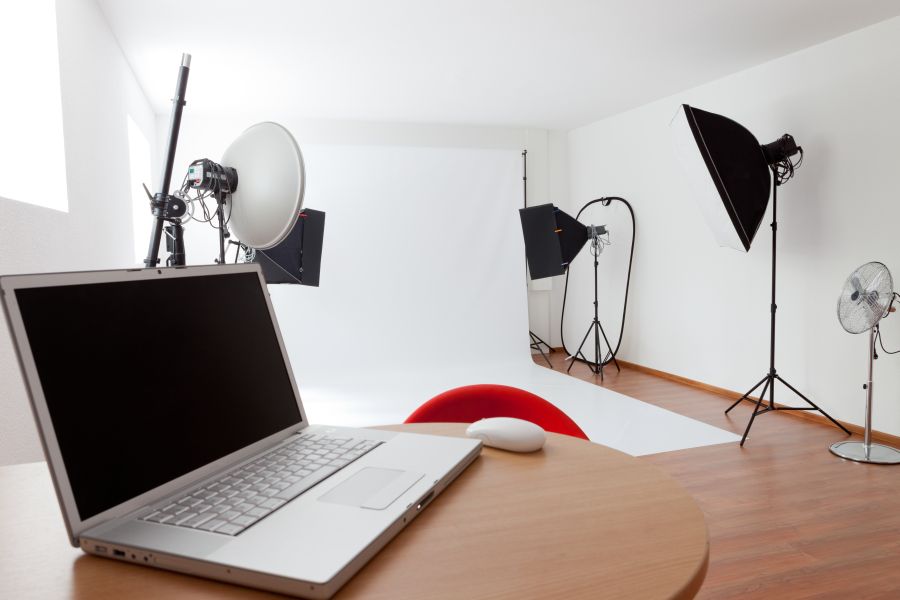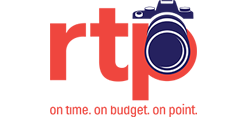Should I Open A Small Photography Studio In A Business District Outside My Home?

I specifically said small because I’m not going to go over 600 square feet in this post for two key reasons: 1) Monthly Rent 2) Most photographers reading this will likely not jump into 1,000+ square feet right out of the gate unless the photographer has been steadily running a growing home based studio.
I know several photographers that stay very busy without having a studio in their home or outside their home. I know other photographers that have home based studios (Dining Room, Garage, etc.). I don’t actually personally have a close relationship with any photographers in the Raleigh market that have a studio in a business district with a commercial lease. Since Brenda and I run a studio in a business district outside of our home, I thought a blog post about about a studio outside the home might be beneficial to any photographer considering that as an option for their business.
Below are several key questions to ask yourself:
1) Do I want a studio or need a studio outside of my home? There is a difference. If you want a studio, then you have to think deeper about the question which I will not cover here. I’ll let you list out all the reasons that you want a studio.
If you need a studio, that means that you are losing business by not having a studio and/or that you desperately need to expand your business based on your current growth rate.
2) Do I have enough ongoing business to support the rent for a studio until the studio can support itself? One key reason some photographers debate about opening a studio outside their home is additional overhead and whether they can afford it. That’s a valid question. Based on talking with a friend of mine in the Atlanta area, I think he has enough revenue to support a studio outside his home and could grow his business even more without the studio initially supporting itself.
3) How much space to I need for a studio? This is a difficult question to answer which ties to location, cost, area of focus, etc. For example, if you do large families and bridal portraits, you will need to think through the layout and size different than a photographer that does headshots and product photographer (the size of piece of luggage and smaller). However, you can still get by with a small space for families and bridal portraits. For example, you will enough room for a 9 or 10 foot wide background with enough room for lighting which means you could likely get by with a 15 x 25 large room (roughly) on the small side. That’s 375 square feet. The trick is actually finding a room that size. Our first studio was a room that was about 12 x 20 (240 square feet) with a common area that allowed people to sit outside the one room studio. That over 25 years ago.
You’ll likely want a room for your gear/office, so I’m thinking on the small side (pending the layout) that you might be looking at 600 square feet. Yes, you can get by with less if you find the right setup. If you only do headshots and small products, you could make all that work in 400 square feet or less pending the layout.
4) Do I want or need to store my gear at home or at my new studio? Think through how much gear you currently have and what the answer to that question would look like. One of the key advantages to having a studio is leaving gear setup and just cutting it on when needed. It would be a pain to have a studio outside your home and have to continually move gear back and forth. You’ll lose time by having to prepare for setting up and breaking down for a session. It’s a lot easier to schedule a shoot at your studio at 2 p.m., show up a few minutes early, flip on the lights and be ready to go and then just walk out when you are finished without breaking down a lot of gear.
5) How long will the lease be and how much will my monthly rent be? Most commercial leases are 3 years. Yes, 36 months. That’s a commitment far beyond a 12 month lease on a apartment. So you may want to ask that question early on in the conversation.
As for calculating the monthly rent based on the cost per square foot, here’s how that is done. $14 per square foot on 500 square feet is $14 x 500 = $7,000 divided by 12 months = $583 per month base rent. So for quick math, if you see a space advertised at $12 per square foot then the square footage is also the monthly base rent number. For example, $12 x 400 square foot = $4,800 divided by 12 months = $400 per month base rent. Some places will likely say a base monthly rent without mentioning a per square foot cost. It’s not uncommon in the Raleigh market to find spaces that are $24+ per square foot which means that 500 square feet would be $1,000+ per month. You’ll likely want to search long an hard for a space that is on the lower end initially.
6) What other costs do I need to consider? You’ll have to think about phone (probably your cell), internet (you’ll likely need this – but could do post from home), security (worth thinking about), utilities (may be included-if not dig for cost), renters insurance (should have it), etc. You will likely add $200 to $400+ on the low end beyond the monthly base rent. So if you find a space for $500 per month. It will likely run you $700+ per month in the end. However, there is the possibility that you may add ZERO extra (at least initially).
7) What type of space do I need? For example, do you need a store front space in a strip mall? I’d say avoid this if at all possible. Find an easy access space that is not too far off the beaten path that you are not paying extra for store front. You’ll also want to avoid pricey office suites with access to a conference room and other amenities because you’ll likely find that one office the size of a small bedroom is $1,000+ per month. A small office will not work as a studio. I’d suggest that you look for older, but nice, office complexes like office condos/town-homes, older nice office buildings (not the shiny, mega, new ones), etc. But definitely keep location in mind. For example, our studio is literally one turn off of a very popular North Raleigh road (Six Forks Road). Our Cary location is off a main Cary road (Maynard Road). I say that because you don’t want to be so far off the beaten path that people have to make 27 right turns of the main road to get to you.
8) How much business do I need to pay my small studio overhead? Calculate your total cost of having a small studio and figure out how much business it takes to break even (assuming you have plenty of other location work going on). With $700 per month in rent and expenses and charging $100 to 125 for a headshot (common price for some photographers that I know), the gross break even point is about 6 or 7 in studio headshots. Yes, you want to do better than break even, but if you have other ongoing regular business that was steady before you opened the studio, I think you should initially look at how the studio will pay for itself on a break even level. If the studio can break even the first week of every month, then that leaves the rest of the month to make a profit from in studio work.
The disadvantages of having a home based studio:
Don’t get me wrong, I’m not against having a home based studio. Although I am not an accountant, there are likely some nice tax advantages to having a home based studio. However, I think there are several disadvantages when compared to a small studio outside of the home.
Before I dive in, let’s get the elephant out of the room. Yes, there are also advantages to having a home based studio vs. one outside the home. I get that. There is also a disadvantage of the extra rent of having a studio outside the home. However, for me, I much prefer to have a studio outside of my home in a commercial business district.
Here are 5 disadvantages that quickly come to mind:
1) The perception of going to a residential home vs. a commercial business.
2) Male or Female Photographers working solo with the opposite sex inside a home environment.
3) Layout of the home studio with restroom, changing area, etc.
4) Someone you may have never met coming inside your home.
5) Your Children, Your Pets and other distractions at your home.
Again, there is nothing wrong with having a home based studio, but there are several advantages to having a studio outside the home. However, it can be scary taking the risk of additional overhead even if the total overhead is less than $1,000 per month. The key to starting a studio outside of a home environment is to start small and to keep cost down. You can always grow into something larger.
Here are 4 advantages to having a studio outside of a home environment:
1) Being located around other businesses
2) The ability to minimize the distractions that may not be as controllable in a home environment
3) Clearly separate business expenses because it’s outside the home and 100% dedicated business space
4) Getting more done – Yes, it’s nice to separate home life (Laundry, TV, etc.) from a dedicated work environment
In our case, we definitely do more business by having a studio in a business district with easy access of off a major business road. It’s also in between the two (440 and 540) outer loops around Raleigh. However, we have managed to keep overhead reasonable. We could very easily be in the same area at a different location with 2X or even 3X+ the monthly rent for the same amount of space. The nice thing is that we are near the high rent district without paying the high rent.
If you enjoyed this post, please be sure to use the social icons below to share it.
Please feel free to call me at the number in our header or click on the contact page at the top of this page to contact me online.
David Williams
Latest posts by David Williams (see all)
- 5 Signs You’re Hiring the Wrong Photographer for Your Business - April 9, 2025
- How Will AI Change Professional Photography? - February 2, 2025
- Family Photographers vs. Commercial Photographers: Exploring the Differences in Approach, Purpose, and Technique - February 2, 2025
- Black and White Film Shot Of Our Golden Retriever: Trigger - February 2, 2022
- North Carolina Snow Images Shot In Franklin County - January 22, 2022




